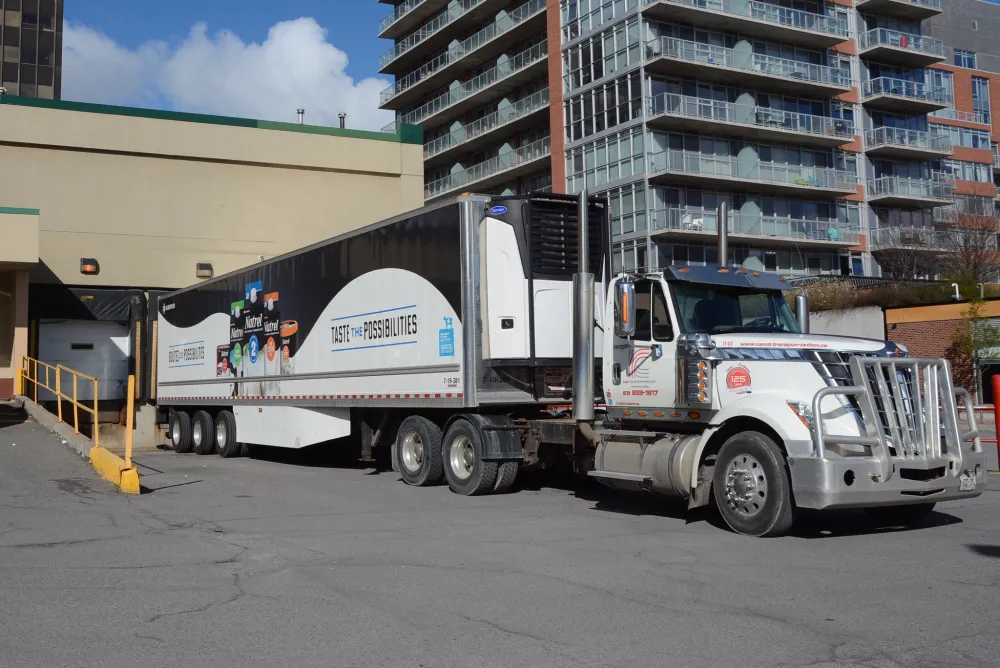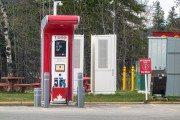Trucking is a major source of Canada’s carbon pollution – freight transportation accounts for 10.5% of Canada’s greenhouse gas (GHG) emissions and a majority of these emissions come from heavy-duty trucks. We know that to reach Canada’s long-term goal of decarbonization by mid-century every per cent of reduction counts, and tackling emissions from heavy-duty freight is essential in any climate plan. The good news is that solutions are well within reach, and will result in businesses and trucking companies saving money, making efficiencies, and creating cleaner air for all Canadians to benefit from.
Reducing emissions from heavy-duty, long-haul freight requires a combination of improved policies, and technological advancements in alternative fuels and vehicle efficiencies. In our recent report, ‘Fuel savings and emissions reductions in heavy-duty trucking’, we created a blueprint for action with 11 recommendations on how the federal government can work to bend the emissions curve in heavy-duty freight. Our findings show the importance of collaboration and planning across different levels of government and with industry, has never been more important. In our blueprint for action, there are three specific opportunities in which such collaboration and planning can have high impact:
- A national zero-emissions heavy-duty vehicle infrastructure development strategy
- A national land freight strategy
- A joint industry-government working group on viable short- and medium- term clean heavy-duty trucking technologies
A national zero-emissions heavy-duty vehicle infrastructure development strategy
To reduce Canada’s freight emissions, we need to shift to lower-emitting fuels, and invest in the infrastructure necessary to support this move. While progress has been made through programs like the Electric Vehicle and Alternative Fuel Infrastructure Deployment Initiative (EVAFIDI), that allocates funding to establish a coast-to-coast vehicle charging network, direct efforts are required to overcome barriers that exist to expand zero-emissions heavy-duty vehicle refueling and recharging infrastructure. In the case of hydrogen fuel cell vehicles, greater support is needed to develop markets and distribution infrastructure across Canada. For battery electric trucking, it is incumbent for governments to work with utilities to help ensure electricity rates and extension policies (the length of time and the cost charged to upgrade the local grid) do not pose obstacles towards freight electrification. One way for the federal government to incentivize the wide-spread adoption of zero-emissions heavy-duty vehicles is by creating a national zero-emissions heavy-duty vehicle infrastructure development strategy in partnership with provincial governments and utilities. California’s zero emissions vehicle (ZEV) Action Plan is a great resource to help think about developing a strategy appropriate for our Canadian context.
A national land freight strategy
The efficient movement of goods is vital to industries and our Canadian economy given that 35% of goods are moved by truck between provinces and territories in Canada. Despite this, Canada has not articulated a harmonized national vision and long-term strategy for goods movement. Since the movement of vehicles across provincial and territorial boundaries fall under the Government of Canada’s responsibilities, it is important that the federal government work with its provinces and territories to develop a strong interjurisdictional strategy that will encourage mode shift and increase efficiency for goods movement. By setting long-term objectives, this provides clear signals for industry that governments take clean freight seriously, and have a strong vision. A national land freight strategy could encompass adoption targets for medium- and heavy- duty vehicles and corridor planning for heavy-duty refueling/recharging stations. It could also include measures to shift goods movement to lower-emitting modes, where feasible, and find efficiencies in truck trips (reducing “empty trucks” on the road).
As highlighted by Pollution Probe, a number of jurisdictions have adopted national freight strategies, including Metro Vancouver, the City of Edmonton, and Region of Peel in Ontario, and could help inform the development of a pan-Canadian strategy.
A joint industry-government working group on viable short- and medium- term clean heavy-duty trucking technologies
Our research has shown there is a lack of reliable information on the most viable and cost-effective clean freight solutions. In order to ensure more widespread adoption of lower-carbon technologies, there is merit for industry and government to increase their efforts to help fleet managers understand various risks and opportunities, and make informed decisions on adopting alternative fuel technologies. To build on past efforts to address interjurisdictional trucking issues, we recommend a joint working group or task force of industry representatives and environmental and climate policy experts, with participation from all levels of government. By studying long-term technology pathways, producing recommended technology options for fleets, and recommendations on federal and provincial policies and programs, industry and government can work together to bend the curve on freight emissions.
Want to learn more? Check out the recording from our recent webinar.







